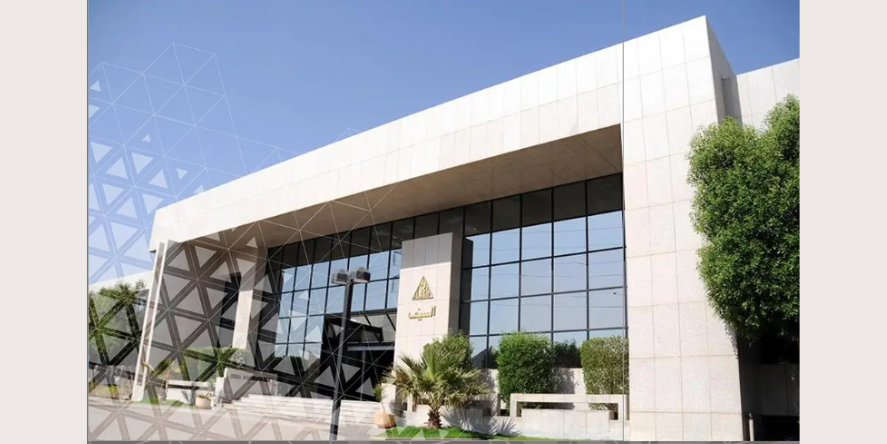A solar monitoring system is a technology that allows you to track and manage the performance of your solar panels. It provides real-time data on energy production, consumption, and system health.
According to SalTec, a solar monitoring system enables optimization of solar panel efficiency, ensures proper operation, and allows for rapid issue identification and resolution.
In this blog, we will explore how solar monitoring systems work, their importance in optimizing energy efficiency, the different types available, and the benefits they offer to maximize solar panel performance and reliability.
How Does a Solar Monitoring System Work?

A solar monitoring system tracks the performance of solar panels using sensors, communication devices, and software.
Data Collection
- Sensors: Installed on your solar panels or integrated into the inverter, sensors measure various parameters like voltage, current, and power output. Some systems offer module-level monitoring, providing detailed data for each panel, while others might monitor string or inverter levels for a broader overview.
- Inverters: The inverter, which converts DC electricity from the panels into AC electricity for home use, often has built-in monitoring capabilities that gather data on energy production and system performance.
Data Transmission
- Communication Devices: This data is sent to a central communication device, known as a gateway. The gateway uses methods like WiFi, Ethernet, or cellular networks to transmit the information from the sensors to a data storage system.
- Cloud Upload: The collected data is typically uploaded to a cloud-based platform, where it is stored and processed. This allows for easy access from anywhere with an internet connection.
Data Processing and Visualization
- Software Analysis: The cloud-based software processes the incoming data, organizing it into meaningful insights. It can identify trends, compare current performance against historical data, and detect anomalies.
- Visual Representation: The software displays this information in user-friendly formats such as bar graphs, line charts, and tables. Users can view metrics like daily energy production, peak performance times, and historical energy trends.
Monitoring and Alerts
- Real-Time Tracking: Users can monitor their solar system’s performance in real-time, seeing how much energy each panel produces and how it matches their consumption.
- Proactive Notifications: The system can send alerts for various issues, such as a sudden drop in power output, system faults, or weather conditions that might affect performance. These notifications help in promptly addressing problems, minimizing downtime, and maintaining optimal performance.
Importance of Solar Monitoring System

Maximizing System Efficiency
- Performance Tracking: Continuous monitoring ensures that your solar panels produce as much energy as possible. If a panel underperforms, you can identify and fix the issue quickly, whether it’s due to shading, dirt, or a malfunction.
- Energy Management: By understanding how much energy your panels produce versus how much you use, you can adjust your energy consumption habits to make the most of your solar power.
Early Problem Detection
- Issue Alerts: The system provides alerts for potential problems like system faults, inverter issues, or declining power production. Early detection allows for quick fixes, preventing small issues from becoming costly repairs.
- Maintenance Scheduling: Predictive insights help schedule maintenance before a minor issue escalates, ensuring consistent performance and extending the lifespan of your system.
Better Energy Management
- Usage Patterns: Monitoring your energy consumption helps you identify peak usage periods and adjust your energy use accordingly. For example, you might decide to run energy-intensive appliances during times of high solar production.
- Storage Optimization: If you have a battery system, monitoring helps you manage stored energy efficiently, ensuring you have enough power during cloudy days or at night.
Environmental Benefits
- Enhanced Efficiency: By keeping your solar system efficient, you contribute to reducing greenhouse gas emissions. Maximizing solar energy production lessens your reliance on fossil fuels, supporting a cleaner environment.
- Sustainability: Efficiently monitored solar systems make better use of renewable resources, aligning with sustainable energy goals.
Types of Solar Panel Monitoring Systems
Here are four main types of solar monitoring systems:
Inverter-Level Monitoring
Inverter-level monitoring tracks the overall performance of a solar system by measuring the output from the inverter, which converts DC to AC power.
It provides a general overview of total energy production but does not offer detailed insights into individual panel performance. This monitoring type is simple and cost-effective, ideal for small or uncomplicated solar installations.
However, its broad focus means it may miss specific issues affecting individual panels or strings, potentially leading to overlooked inefficiencies within the system.
String-Level Monitoring
String-level monitoring tracks performance data for groups of solar panels connected in series, known as strings. It offers more detail than inverter-level monitoring by identifying how each string contributes to overall energy production.
This monitoring type helps pinpoint issues within specific strings, making it suitable for medium-sized installations where individual panel tracking is unnecessary or too costly.
While it provides a better view than inverter-level monitoring, it might not detect problems within individual panels, which can still affect system efficiency.
Module-Level (Panel-Level) Monitoring
Module-level monitoring offers the most detailed performance data by tracking each solar panel individually. Sensors attached to each panel provide insights into their specific output, allowing for precise identification of underperforming panels.
This monitoring type is ideal for large or complex installations, where detailed data ensures each panel functions optimally.
While it maximizes system efficiency by targeting maintenance and repairs to specific panels, it is more expensive and complex to implement compared to string or inverter-level monitoring due to the need for more sensors and data management.
Standalone Monitoring Systems
Standalone monitoring systems function independently of the inverter and can be integrated into various solar setups, including older systems or those with limited inverter capabilities.
They use additional sensors and devices to track energy production and consumption, offering detailed insights similar to module-level monitoring without relying on the inverter. These systems provide flexibility and comprehensive data but may involve more complex setup and higher initial costs.
They are suitable for enhancing existing systems’ monitoring capabilities, ensuring detailed performance tracking regardless of the components used.
The Benefits of Solar Monitoring Systems
Enhanced Energy Efficiency
- Optimizing Performance: By tracking the energy output, you can ensure each panel is working efficiently, making adjustments as needed to maintain peak performance.
- Identifying Issues: The system helps spot inefficiencies or problems early, allowing for quick fixes and better overall energy production.
Predictive Maintenance
- Early Detection: Continuous monitoring can reveal early signs of potential issues, such as a panel starting to underperform or a component nearing failure.
- Preventive Actions: This allows you to take preventive measures before issues become major problems, reducing the risk of unexpected system breakdowns and costly repairs.
Real-Time Data and Control
- Immediate Access: You can access real-time data on your solar system’s performance, including current energy production and historical trends.
- Informed Decisions: This information empowers you to make informed decisions about your energy usage and system management, optimizing your solar setup.
Cost Savings
- Lower Bills: By maximizing the efficiency of your panels, you can reduce your electricity bills.
- Avoiding Repairs: Predictive maintenance and early issue detection help avoid expensive repairs and replacements, saving you money in the long run.
Seamless Integration and Compatibility
- Versatility: Many monitoring systems are designed to work with a wide range of solar panel models and inverters, ensuring compatibility and ease of use.
- Scalability: These systems can often be scaled to fit different sizes and types of solar installations, from small residential setups to large commercial arrays.
Environmental Impact
- Increased Efficiency: Efficient monitoring leads to optimal solar energy production, reducing reliance on non-renewable energy sources.
- Sustainable Practices: By maximizing the use of solar energy, you contribute to a lower carbon footprint and support environmental sustainability.
User-Friendly Interface and Accessibility
- Easy Monitoring: Most systems come with user-friendly interfaces and mobile apps, making it easy to monitor and manage your solar system from anywhere.
- Convenient Control: With features like remote access and alerts, you can stay informed about your system’s performance and address issues promptly.
How To Choose a Solar Panel Monitoring System?
When selecting a solar panel monitoring system, consider the following factors:
Accessibility
- Web vs. Mobile Access: Determine if you need web-based access, a mobile app, or both. Ensure the system offers a user-friendly dashboard or interface.
- Ease of Use: Look for systems with simple navigation and clear monitoring details to make the data easily understandable.
Alerts and Notifications
- Customization: Choose a system that allows you to customize alerts for issues like poor performance, weather conditions, or system malfunctions.
- Timeliness: Ensure the system provides timely notifications to address problems as soon as they arise.
Compatibility
- Existing Equipment: Verify that the monitoring system is compatible with your current solar panels and inverter brands.
- Integration: Consider how well the system will integrate with your existing setup and any additional equipment you might need.
Data Reporting
- Real-Time Data: Look for a system that offers real-time data on energy production, consumption, and historical analysis.
- Detail Level: Decide on the level of detail you need, whether it’s module-level data or broader system performance metrics.
Cost
- Upfront Costs: Consider the initial cost of the monitoring system and any additional sensors or equipment required.
- Ongoing Expenses: Be aware of potential recurring costs, such as fees for cloud storage or data analysis.
Troubleshooting and Support
- Technical Support: Choose a system with reliable technical support for help with system issues and troubleshooting.
- Resources: Access to an online knowledge base, manuals, or other resources can be helpful for resolving common problems on your own.
Conclusion
Solar monitoring systems play a crucial role in maximizing the efficiency and reliability of solar panel installations. By providing real-time data and proactive alerts, these systems empower users to optimize energy production, minimize downtime, and make informed decisions about their energy usage.
As renewable energy continues to gain prominence, investing in a solar monitoring system not only enhances operational transparency and sustainability but also contributes to long-term cost savings and environmental stewardship.
Blog Received On Mail











